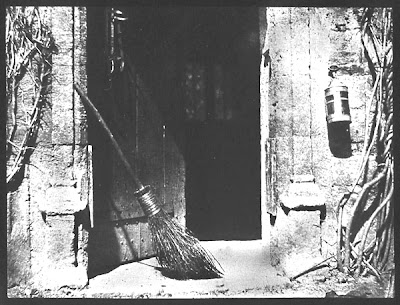Salt print from a calotype negative, April 1844. 18.8 x 23.1 cm.
source: http://foxtalbot.dmu.ac.uk/resources/opendoor.html
source: http://foxtalbot.dmu.ac.uk/resources/opendoor.html
"The Open Door reveals a telling interest in the artistic treatment of the mundane." The image's "picturesque dimension suggests the inventor's familiarity with examples of Dutch genre painting of the 17th century"
Rosenblum, Naomi - World History of Photography, 1997 ( page 31)
It is interesting to note that, as Rosenblum herself explains, "soft definition", that is the "blurry" or "fuzzy" characteristics of the calotype image, contrasted the calotype print to the finesse of detail and sharpness of the daguerreotype. Talbot in fact referred to the effects of his early "photogenic drawings" as "Rembrandtish" (Rosenblum, page 29)
Although the negative-positive method of Talbot would point the way to future developments of photography, the quality of the early calotype images made it difficult to supplant public attachment to the daguerreotype both in Europe and in America.
Rosenblum, Naomi - World History of Photography, 1997 ( page 31)
It is interesting to note that, as Rosenblum herself explains, "soft definition", that is the "blurry" or "fuzzy" characteristics of the calotype image, contrasted the calotype print to the finesse of detail and sharpness of the daguerreotype. Talbot in fact referred to the effects of his early "photogenic drawings" as "Rembrandtish" (Rosenblum, page 29)
Although the negative-positive method of Talbot would point the way to future developments of photography, the quality of the early calotype images made it difficult to supplant public attachment to the daguerreotype both in Europe and in America.

Comments